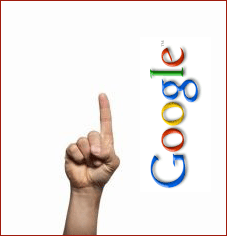 Yesterday we talked about choosing the right keywords for SEO. Once you have the perfect keywords, it’s time to optimize your current website for the search engines.
Yesterday we talked about choosing the right keywords for SEO. Once you have the perfect keywords, it’s time to optimize your current website for the search engines.
These are the things that you have to do on each page of your website to make it more search engine friendly.
Step 1: Title
The page title is a key component of SEO. You should use the keywords naturally here. Don’t just put all the keywords separated by commas because this will look like SPAM to the search engines. Also, the title is what people will see on the search engines result page in blue, so it has to look attractive enough for them to click on it.
This is a sample HTML code for the title:
<title>Internet Marketing Agency | The Outsourcing Company</title>
DO NOT USE THE SAME TITLE FOR ALL THE PAGES ON YOUR WEBSITE.
Step 2: Meta description
The meta description is very important. It will also be seen by the people who search on Google or Yahoo. Plus, it has a lot of weight on the search engines algorithm.
This is an example:
<meta name=”Description” content=”We are one of the fastest-growing creative web design agencies in America. If you are looking for a professional website design that gives your business a strong online presence and helps you get more customers, you are in the right place.” />
Write the meta description for people, not search engines. Don’t stuff it with keywords. Make it look natural. In the example above, it looks perfectly natural but notice how I included “web design” and “website design”, two of the main keywords.
DO NOT USE THE SAME META DESCRIPTION FOR ALL THE PAGES ON YOUR WEBSITE.
Step 3: Meta keywords
The meta keywords tag is not nearly as important as it used to be. However, it will only take one minute and it’s definitely worth it. Here is how this works:
<meta name=”Keywords” content=”web design,website design,web site design,web development,website development,web site development” />
DO NOT USE THE SAME META KEYWORDS FOR ALL THE PAGES ON YOUR WEBSITE.
Step 4: H1, H2, H3, Hx tags
“H” stands for headline. The H1 tag is the main headline. The H2 is a sub-headline, and so on.
Put your keywords inside your H1 and H2 tags. For example,
<h1 >Professional Web Design That Makes Your Business Grow</h1>
<h2 >Our Web Design Services</h2>
<h2 >Why Choose The Outsourcing Company as Your Website Design Partner</h2>
Step 5: Domain Name and URLs
If you haven’t chosen a domain name, make sure that the one you choose has your keywords in it. For example, www.affordablecars.com will have to work a lot less than www.johnsautodearlership.com to rank for the term “affordable cars”.
If your domain doesn’t include the keywords, make sure that at least your pages do. For example, instead of having a URL like www.yourstore.com/category1/product15.html you should have one like www.yourstore.com/luxury-handbags/louis-vuitton/large-ellipse.html
Step 6: ALT tags
Make sure all the images on your website have ALT tags. For example:
<img src=”images/sombra-arriba.gif” width=”922″ height=”13″ alt=”Web design”/>
Step 7: Put your keyword throughout the body
You should use your keywords in the copy too. Don’t overdo it. Always make it look natural. You don’t want to say “We are a web design agency. We do web design. Web design is what we do. Choose us for web design.” Google is very smart and can figure out what you are trying to do. And they don’t like it.
You can also put your keyword in bold once or twice to make them stand out. Again, don’t overdo this either.
Very important consideration
I just can’t emphasize this enough. Make your page and copy look natural. Don’t just stuff it with keywords. Write for your visitors, not the search engines. If your visitors love your information, Google and Yahoo will too.
Make sure that if you want to position a page for the term “web design”, then the page talks about web design. I might sound like an obvious statement, but you will be surprised at how many websites write odd copy and they just put their keywords anywhere they can. Google has LSI technology. LSI stands for Latent Semantic Indexing, which means that they know whether your page is about web design based on the other words used on the page. In fact, a lot of websites that are on the first page of Google for a given keyword don’t even have the keyword on the page. It might be an excellent web design article that doesn’t mention “web design” in it.
Make it look natural. And let me say this one more time: write for your visitors, not the search engines.


